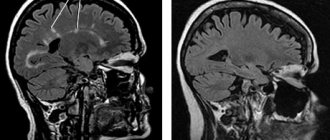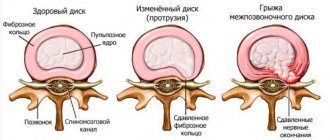Carefully! Rabies!
17.Nov.2017
WHAT IS Rabies?
Rabies is an acute viral infectious disease, common to humans and animals, with signs of damage to the central nervous system, always fatal. All mammals and humans get sick. Wild animals are the reservoir of infection in 90% of cases. Stray animals pose a great danger.
Almost until the end of the 19th century, people had no means against this disease, and any treatment was ineffective, so a person who became infected with it from domestic or wild animals was doomed to death. Then, a vaccine against rabies was developed, which made it possible to stop the disease in the early stages and save bitten patients. The French scientist Louis Pasteur deserved honor and recognition for creating the vaccine - it was he who made the first rabies vaccinations and saved the life of a small patient.
HOW DOES INFECTION OCCUR?
Infection occurs when the rabies virus enters the human body through the saliva of sick animals through bites, scratches, the mucous membrane of the eyes, mouth, and nose. The virus, through lesions on the skin, can enter the human body even through contact with any object or clothing contaminated with the saliva of an animal with rabies.
The most unpleasant thing is that the animals themselves do not yet have signs of rabies at the time of their attack on humans (or other animals) - they become dangerous to others a week before the appearance of severe symptoms. Therefore, if a person has a pet infected with rabies, he may not even suspect it until the animal attacks him or he develops clinical symptoms, which increases the likelihood of infection.
The prognosis of the pathology usually depends on timely consultation with a doctor after a bite of a cat, dog or other animal and on compliance with the preventive vaccination regimen. Those who are diagnosed with the rabies virus at a late stage and who do not promptly seek medical help after the incident die in 100% of cases.
Rabies carriers
HOW DOES RABIES MANIFEST IN ANIMALS?
In dogs, the disease can occur in a violent or quiet form. In the first case, there is a manifestation of anxiety, a desire to hide in a dark place, decreased appetite, eating inedible objects, drooling, and aggressiveness. The dog lunges at people and animals, including its owner, and bites them. Then convulsions, paralysis appear and the animal dies.
In cats, the symptoms are largely similar, but during the period of violence they are more aggressive than dogs. They attack other animals and humans with particular viciousness.
Sick wild animals lose fear of humans, run into populated areas, public places, show friendliness, but at the same time strive to attack. Beware of contact with such animals! Do not pick up downed or sick wild animals. Do not help them yourself; call a veterinarian.
HOW DOES RABIES MANIFEST IN HUMANS?
Most often, children and adolescents are admitted to hospitals with suspected rabies virus - this is due to the fact that children are more susceptible to contact with different animals. Adults suffer from this disease only if they are attacked by a sick animal and do not go to the hospital in a timely manner, while a child may not pay attention to a minor bite or the infected saliva of the carrier getting into an open wound on his body.
The rabies virus, entering the body, spreads along the nerve trunks, affecting the entire central nervous system. After this, it is sent to the salivary glands, making the infected person’s saliva dangerous to others. The main site of reproduction of the rabies virus is nerve tissue. Active growth leads to the formation of edema and degenerative-necrotic changes in the affected nerve cells, which explains the typical symptoms of rabies.
Main symptoms: sleep disturbance, weight loss, loss of appetite, fever, rapid heartbeat, convulsions, sweating, apathy, dehydration, hallucinations, agitation, paralysis, decreased motor activity, heavy intermittent breathing, enlarged pupils, burning in the wound area, fear of water, inflammation of the bite site, pain at the bite site.
Symptoms of rabies in humans do not appear immediately, but only after 1–3 months from the moment of infection. Sometimes the disease manifests itself much later - six months or even a year after the bite of a cat, dog or other sick animal, which occurs in cases where the bite is localized on the lower extremities. If the bite is localized to the arms, face or torso, signs of rabies may appear within several weeks.
In medical practice, there are 3 stages of this disease:
the first stage is the stage of depression;
the second is the stage of psychomotor agitation;
the third is the stage of development of paralysis.
The first signs of rabies in humans are associated with the occurrence of unpleasant sensations at the site of the bite, although the wound that was inflicted may already have completely healed by that time. Sometimes re-inflammation of the bite area occurs - suppuration and hyperemia occur.
The patient complains of a burning sensation in the wound area, a feeling of nagging pain and swelling. If the bite was located on the face, the first signs may be the development of visual and auditory hallucinations.
Other symptoms that the rabies virus causes in the initial stage:
low-grade fever;
the appearance of inexplicable fears and the development of an apathetic state (less often a state of excitement);
sleep is disturbed - accompanied by frightening dreams;
appetite decreases and, accordingly, body weight decreases.
Rabies vaccinations and treatment of the disease at the stage of the first symptoms no longer give the desired result.
After several days of this state, the person becomes agitated, does not control himself, and the disease moves to the second stage.
A characteristic symptom of the second stage of a disease such as rabies in humans is the development of hydrophobia. A person is pathologically afraid of water - even the need to drink causes him to have panic attacks with spasms of the laryngeal muscles and respiratory dysfunction. One sound of pouring water can cause a panic attack and spasms, which leads to a violation of the drinking regime and dehydration of the body.
Also, in the second stage of rabies, a person is very sensitive to other irritants. Convulsions can occur from blowing wind, from bright light and loud sound, and the attack manifests itself not only as convulsions, but also as an uncontrollable reaction in the form of violence and rage. Patients tear their clothes, fight, bite and spit - thanks to this, the rabies virus spreads outside the host’s body.
A person’s pupils dilate, he often looks at one point, sweating increases, breathing becomes heavy and intermittent. A person’s consciousness becomes darkened, he experiences hallucinations.
Very often, at the height of the attack, cardiac arrest occurs and the person dies.
If this does not happen, then after the end of the attack the patient’s consciousness clears up. This stage may
last from one day to three days, after which (if the person does not die) the stage of paralysis begins.
Signs of the third stage
from the outside they seem to be an improvement, since the convulsions and hydrophobia stop, and the patient’s motor activity and sensory perception decrease. In fact, this is a signal of a person’s imminent death - his body temperature rises sharply to 40 degrees, tachycardia appears and gradual paralysis of all organs and systems in the body. When the respiratory system or heart is paralyzed, death occurs.
Active manifestations of a disease such as rabies can last from 5 to 8 days. Sometimes the disease begins immediately from the second stage, and in children, in general, it can progress rapidly - without severe symptoms with a fatal outcome within 24 hours.
There is no cure, but prevention!
Prevention.
Since treatment is ineffective, rabies prevention is of utmost importance. For this purpose, a rabies vaccination is indicated for a person who has been attacked. In addition, people who have a professional need to work with animals - hunters, veterinarians, dog catchers - are required to be vaccinated.
There is specific and nonspecific prevention of rabies. The specific method consists of administering rabies serum or immunoglobulin, followed by vaccination. Nonspecific consists of thoroughly treating the wound with a soap solution.
If you find animals with signs of rabies (aggression, inappropriate behavior, excessive salivation), immediately report this to the Nizhnevartovsk Department of State Veterinary Supervision.
Animals that have bitten people must be immediately delivered by the owner to the nearest state veterinary centers for examination and quarantine under the supervision of specialists for 10 days. If this is not possible, the animal must be isolated and a veterinarian called. People who have been bitten by animals should immediately seek help from a medical facility.
Important to remember!
Timely and regular vaccination of animals is the main preventive measure in the fight against rabies, and then communication with your favorite pets will bring you and your children only joy!
What is rabies in dogs and why is it dangerous?
Rabies has a long history and a “strong association” with dogs. The first written account of rabies is contained in the Laws of Eshnunna, dated 1930 BC. e. The report contains not only a diagnosis, but also recommendations that the owner of a dog exhibiting symptoms of rabies should take all possible measures to prevent it from biting anyone.
What is rabies in dogs? It is a viral neuroinvasive disease that causes inflammation in the brain and is usually fatal. Rabies is viral in nature and primarily affects mammals.
During laboratory research, it was discovered that birds can also be infected with the virus. A minor risk group includes cold-blooded animals and insects; they become infected with the virus only unnaturally, if a person has a hand in this process.
Animals with rabies suffer from deterioration of the central nervous system and tend to behave strangely and often aggressively. Inappropriate behavior increases the likelihood that a virus carrier will bite a healthy animal or person, which will lead to transmission of the virus.
In dogs, rabies usually develops in three stages:
- Prodromal or first stage 1–3 days – characterized by behavioral changes.
- The second stage, 3–4 days , is characterized by excitement. It is this stage that is associated with "rabid animal rage" due to the affected dog's tendency to become hyper-reactive to external stimuli and bite anyone and anything that comes close.
- The third stage of 2–3 days is the paralytic stage, which is caused by damage to the neurons of the brain. There are coordination problems and other problems in the central nervous system. The dog cannot walk or does so unnaturally due to paralysis of the hind limb. At this stage, foamy drooling is observed. Further, there are difficulties with swallowing, paralysis of the facial and throat muscles. Death usually occurs due to collapse of the respiratory tract.
Incubation period
The virus affects the spinal cord and brain. The speed at which the infection progresses depends on the location of the bite: the closer it is to the brain, the faster infection will occur. Susceptibility to rabies depends on age, with young dogs and puppies becoming ill more quickly than older dogs. Gender, breed and health status do not matter.
With multiple bites, the incubation period is about two weeks, with a single bite – from one to six months. There are cases where animals showed symptoms a year after the suspected infection.
If your dog is bitten by a domestic or stray animal, you should immediately consult a doctor!










